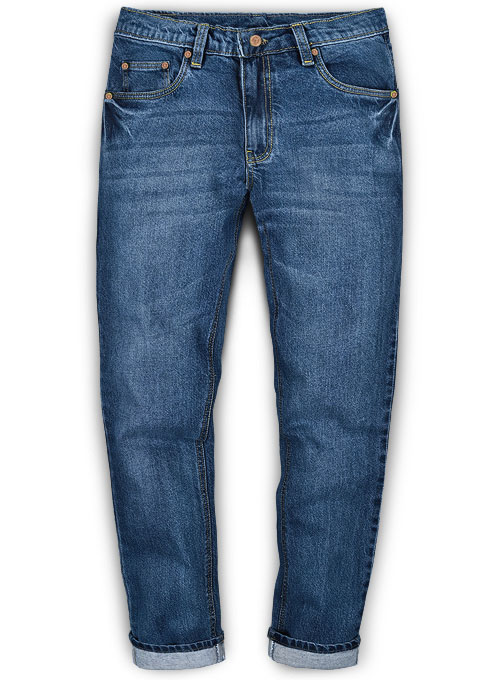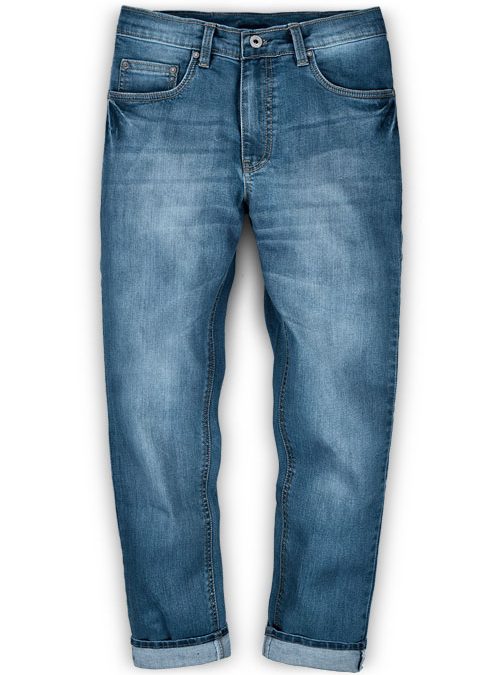Stonewashed jeans have become increasingly popular in recent years. Not to be confused with acid-washed jeans, they offer a vintage look and feel that many men and women prefer. Rather than wearing the same pair of traditional jeans year after year, you can buy a pair of stonewashed jeans. As an alternative style, though, you might be skeptical of stonewashed jeans. In this post, you’ll learn more about stonewashed jeans and how to choose the perfect pair.
What Are Stonewashed Jeans?
Stonewashed jeans are denim trousers — or simply jeans — that are manufactured to achieve a worn-in appearance. They are specifically made using medium- and large-sized stones. Stonewashed jeans are placed inside of a large commercial-grade washing machine that’s filled with stones. When the washing machine spins, the stones pound against the jeans, thus creating a worn-in appearance.
Many people assume that stonewashed jeans are made of a special type of denim, but this isn’t necessarily true. Most stonewashed jeans are made of the same denim as traditional jeans. Traditional jeans, however, aren’t processed using stones. Only stonewashed jeans are processed using this method. Placing stonewashed jeans inside of a washing machine with stones helps to wear them in so that look and feel aged.
Stonewashed vs Acid-Washed Jeans: What’s the Difference?
You’ll probably come across acid-washed jeans when researching the different styles of denim as well. Acid-washed jeans also have a worn-in appearance, which is achieved during production. With that said, acid-washed jeans differ from their stonewashed counterparts in several ways.
Acid-washed jeans are similar to stonewashed jeans in the sense that they are both exposed to stones during production. The stones used in acid-washed jeans, though, are smaller pumice stones. Of course, the biggest difference between stonewashed and acid-washed jeans is that the latter involves the use of chlorine, whereas the former does not.
Acid-washed jeans receive their namesake from their use of chlorine, which is considered an acidic chemical. They are made by placing the jeans in a washing machine that’s filled with pumice stones and chlorine. The pumice stones wear down the jeans’ denim, whereas the chlorine bleaches the denim.
Benefits of Stonewashed Jeans
Why should you choose stonewashed jeans exactly? Well, if you enjoy the look and feel of vintage jeans, there’s no better choice than stonewashed. After all, that’s what distinguishes stonewashed jeans from other denim styles.
Stonewashed jeans have a semi-faded appearance that’s synonymous with vintage jeans. They aren’t completely faded. Rather, they feature subtle hints of fading in certain areas.
Since they are already faded, stonewashed jeans are less likely to fade in the future than other jeans. You can wear them for many years without fear of them fading. Even when worn under the midday sun, stonewashed jeans won’t fade.
Not only do look they worn in; stonewashed jeans feel worn in as well. The difference in texture between new jeans and worn-in jeans is like night and day. Worn-in jeans are naturally softer than their new counterparts. The more you wear a pair of jeans, the softer they’ll become. Well, stonewashed jeans are produced to look and feel worn in. Therefore, they have a similar level of softness as vintage jeans. If you’re tired of wearing jeans that are scratchy or otherwise uncomfortable, perhaps you should try a pair of stonewashed jeans.

How to Choose a Pair of Stonewashed Jeans
Not all stonewashed jeans are the same. Manufacturers offer them in dozens of different styles. As a result, you might feel overwhelmed when shopping for a pair of stonewashed jeans. With so many different styles, how do you know which one is right for you?
When shopping for stonewashed jeans, check the weight of the denim from which they are made. Some stonewashed jeans are made with heavier denim than others. Lightweight denim is naturally thinner than heavyweight denim. Therefore, many men and women prefer stonewashed jeans made of lightweight denim. There are still reasons to choose heavyweight denim, though. With heavyweight denim, stonewashed jeans are stronger and more durable. You can choose stonewashed jeans made of either lightweight or heavyweight denim; just remember to check the weight before buying them.
Along with the weight, you should consider the type of material from which stonewashed jeans are made. Contrary to popular belief, not all stonewashed jeans are made entirely of denim. While most of them are, in fact, made primarily or entirely of denim, some of them contain other materials as well.
There are stretch stonewashed jeans, for example, that use an elastic material in their construction. They are similar to traditional stretch jeans. All stretch jeans feature an elastic material — and stretch stonewashed jeans are no exception.
Stretch stonewashed jeans have an elastic construction that offers greater freedom when worn. They don’t constrict your body, nor do they restrict your ability to bend and move. Instead, stretch stonewashed jeans will stretch with your body.
Tips on Wearing Stonewashed Jeans
There’s really no wrong way to wear stonewashed jeans. As long as you feel comfortable and confident in them, you can wear them however you please. With that said, you should consider a few simple tips to maximize the utility of your stonewashed jeans.
Always pair stonewashed jeans with an appropriate shirt or top. Because they are a form of casual trousers, you should wear them with a casual shirt or top. The key thing to remember is that your shirt or top should flow cohesively with your stonewashed jeans. Asie from featuring a casual style, it should consist of an appropriate color. If the color of your shirt or top clashes with that of your stonewashed jeans, your outfit won’t look right.
Accessorizing your stonewashed jeans with a belt can lift the aesthetics of your outfit. You can still wear a belt with your stonewashed jeans even if they fit properly. A belt, in fact, will enhance the appearance of your stonewashed jeans by defining your midsection.











